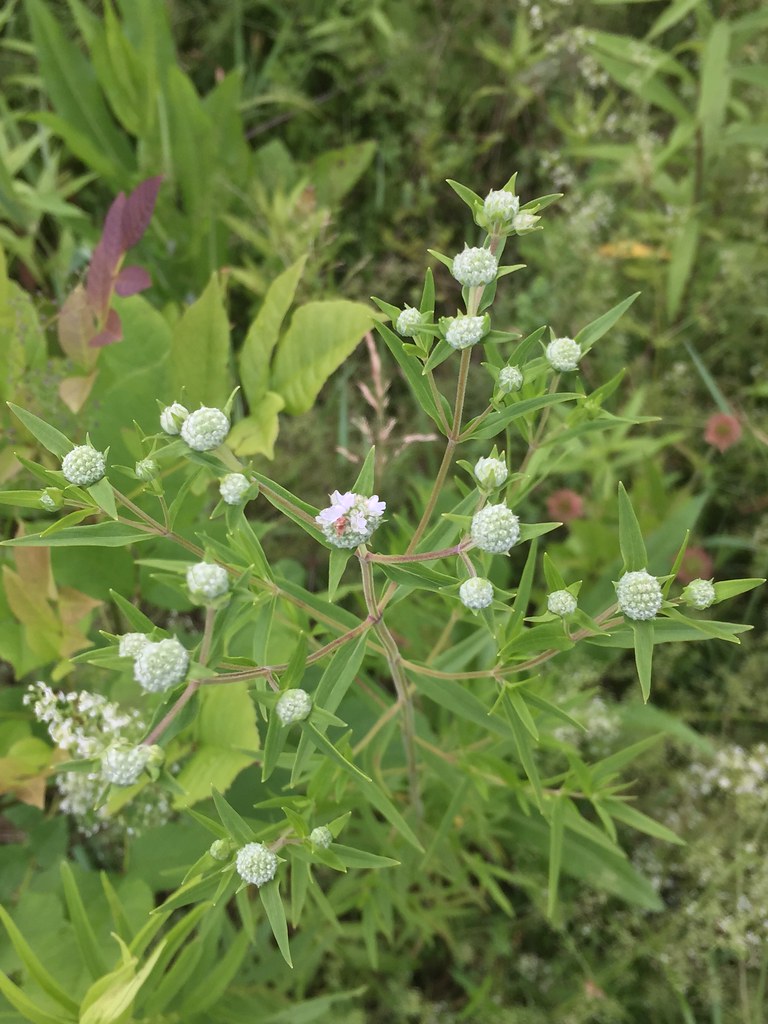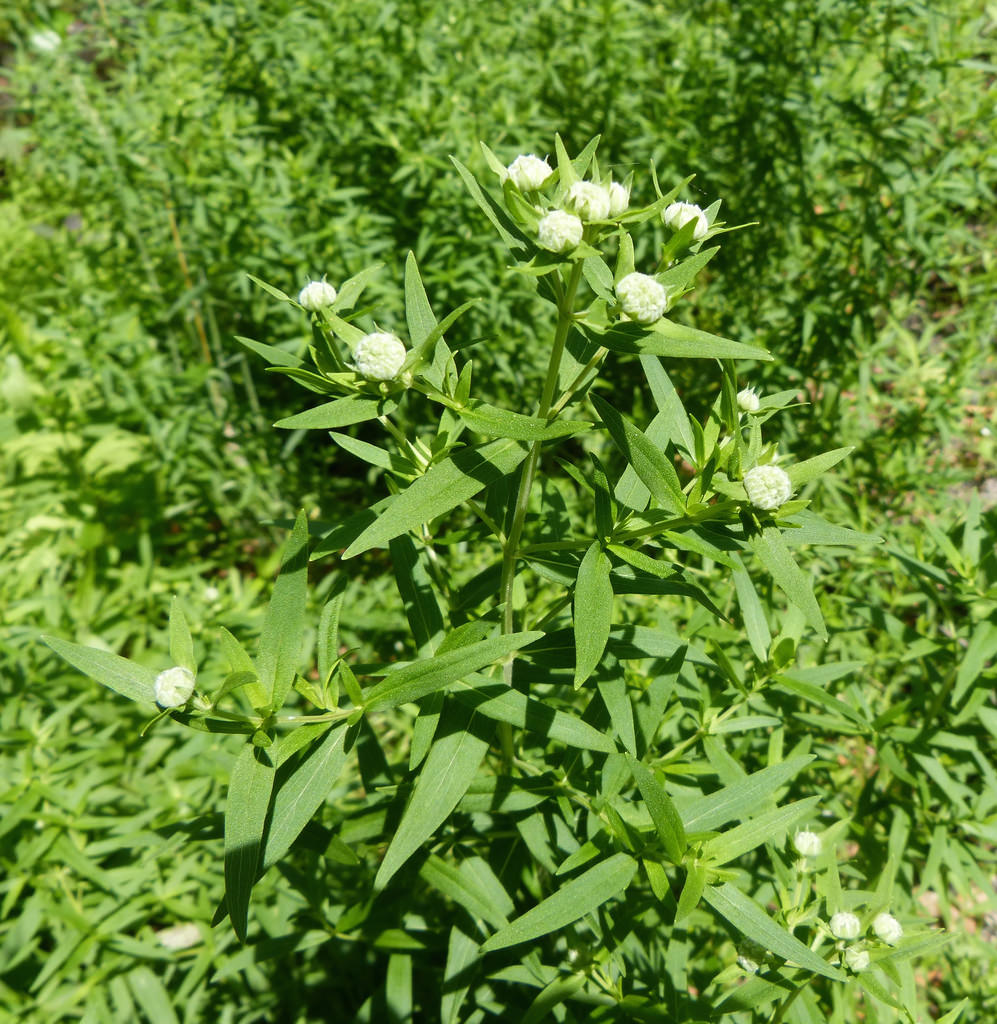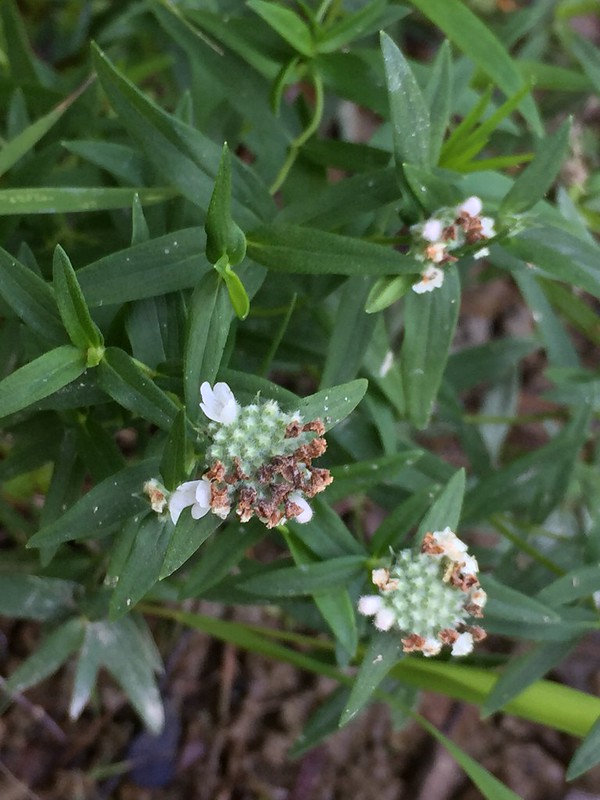Map Snapshot













17 Records
Status
Can be locally common in open shrub-scrub meadows and along roadsides, where it grows in dry to mesic sandy loam (Steury, 2002).
Seasonality Snapshot
Source: Wikipedia
| Virginia mountain-mint | |
|---|---|

| |
| Scientific classification | |
| Kingdom: | Plantae |
| Clade: | Tracheophytes |
| Clade: | Angiosperms |
| Clade: | Eudicots |
| Clade: | Asterids |
| Order: | Lamiales |
| Family: | Lamiaceae |
| Genus: | Pycnanthemum |
| Species: | P. virginianum
|
| Binomial name | |
| Pycnanthemum virginianum | |
| Synonyms | |
Pycnanthemum virginianum, the Virginia or common mountain-mint,[2] is a plant in the mint family, Lamiaceae. It is a herbaceous plant with narrow, opposite, simple leaves, on wiry, green stems. The flowers are white with purplish spotting, borne in summer. Like most plants in the genus, the foliage has a strong mint fragrance when crushed or disturbed. It is native to the eastern United States and eastern Canada.[3][4]
The flowers are visited by many insects, including honeybees, cuckoo bees, sweat bees, thread-waisted wasps, potter wasps, tachinid flies, wedge-shaped beetles, and pearl crescent butterflies.[5]
References
[edit]- ^ "Pycnanthemum virginianum". Germplasm Resources Information Network. Agricultural Research Service, United States Department of Agriculture.
- ^ NRCS. "Pycnanthemum virginianum". PLANTS Database. United States Department of Agriculture (USDA). Retrieved 16 October 2015.
- ^ "Pycnanthemum virginianum". Native Plant Database. Lady Bird Johnson Wildflower Center, University of Texas at Austin.
- ^ "Pycnanthemum virginianum". County-level distribution map from the North American Plant Atlas (NAPA). Biota of North America Program (BONAP). 2014.
- ^ Hilty, John (2020). "Common Mountain Mint (Pycnanthemum virginianum)". Illinois Wildflowers.
External links
[edit]![]() Media related to Pycnanthemum virginianum at Wikimedia Commons
Media related to Pycnanthemum virginianum at Wikimedia Commons


